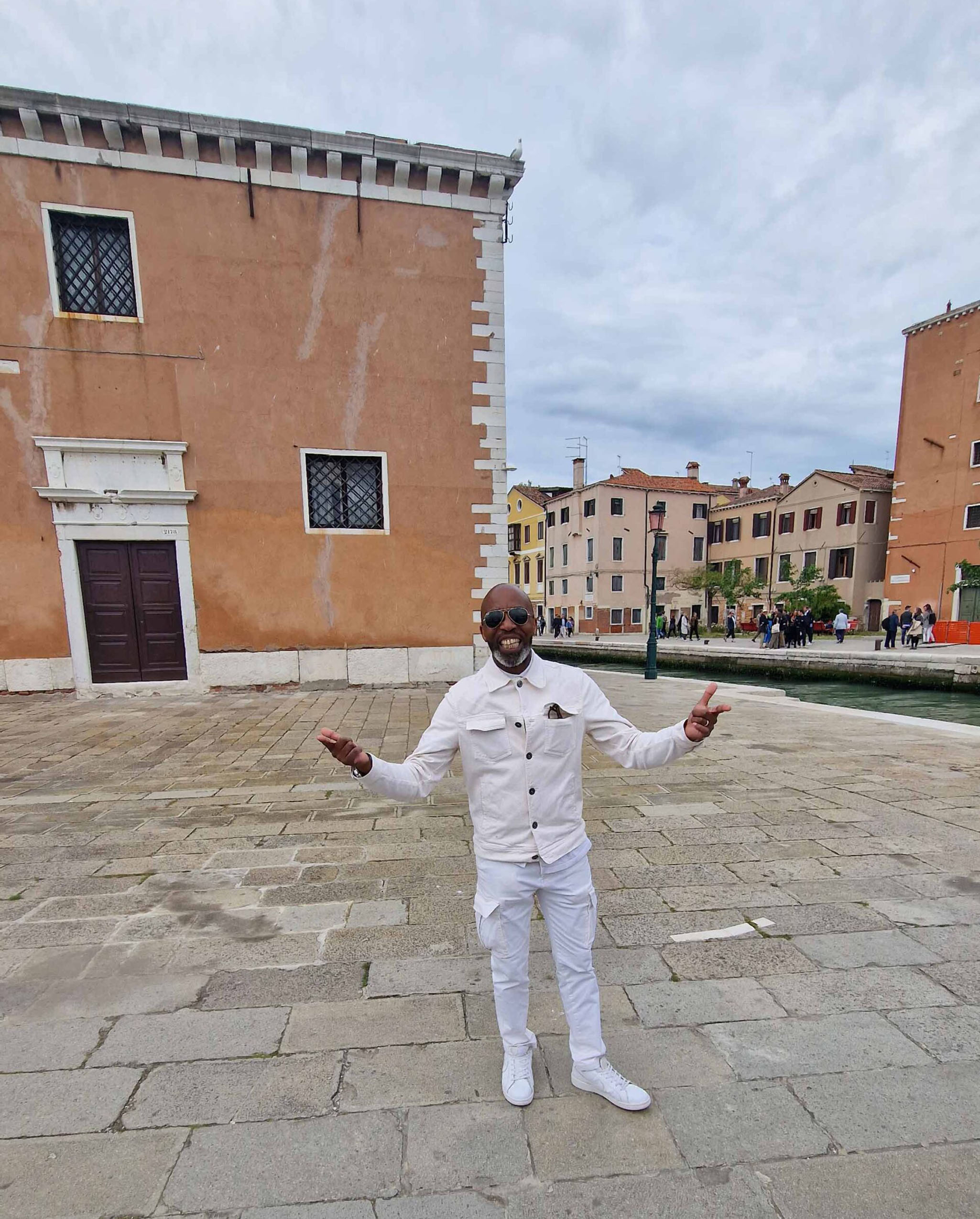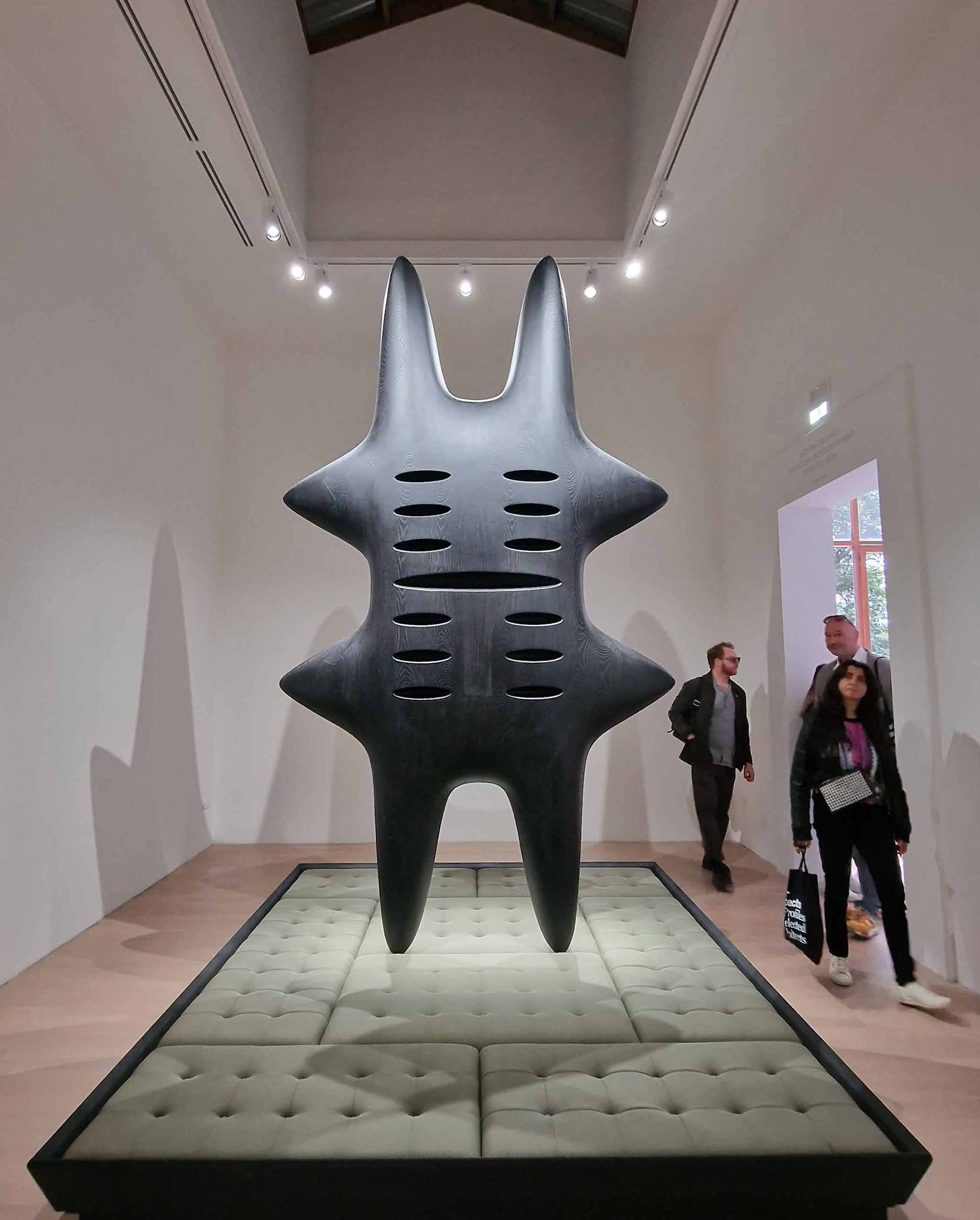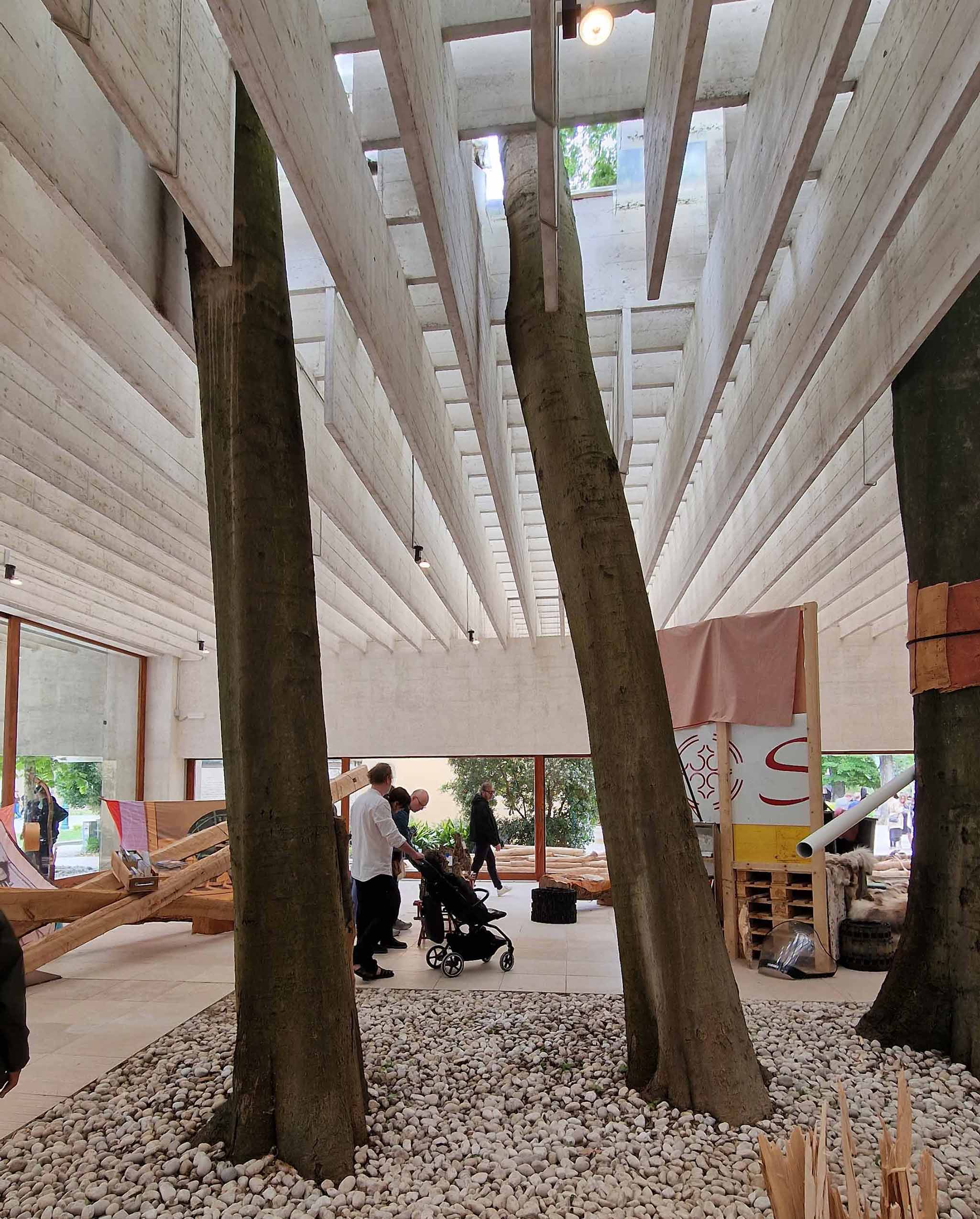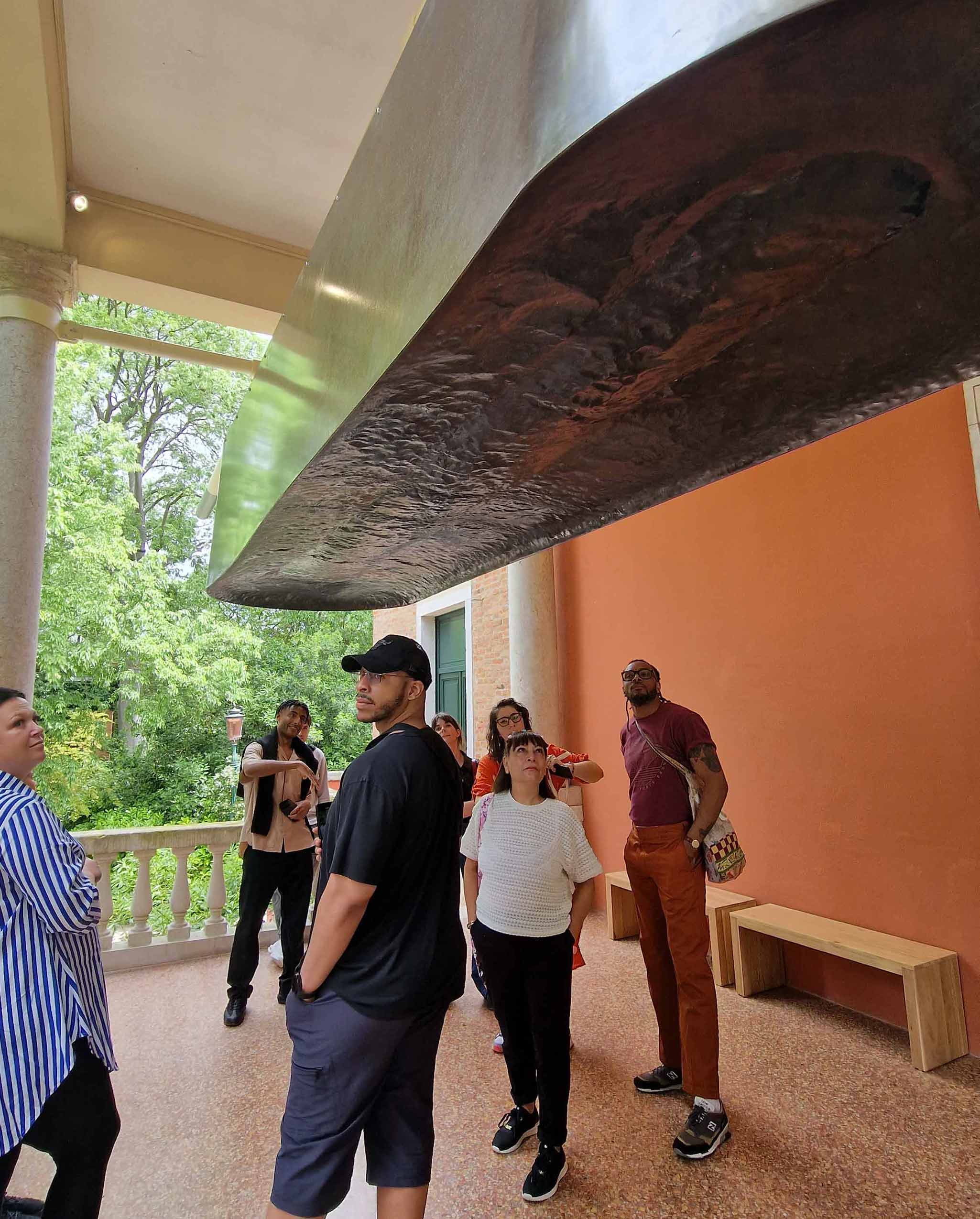
 Runout – Mac Collins, 2023
Runout – Mac Collins, 2023
1. The British contingent
On Dancing Before the Moon, at the British Pavilion, curated by Jayden Ali, Joseph Henry, Meneesha Kellay and Sumitra Upham, Neil says:
‘It was quite emotional. I texted my wife and said ‘I’ve found my creative soul. All these subliminal images recall parts of your own history. All their pieces were edgy but represented what we’ve seen around London, what we see in the Caribbean, all with different voices but the same creativity. Venice has never, ever seen, or heard such a party – it was off the scale!’
He remembers Joseph Henry when their paths first crossed at Graveney School, where the now British Pavilion curator was then a talented sixth former studying design under Neil’s tutelage:
‘Joseph was this young guy, bright-eyed, really good at making and listening. He said he wanted to be a product designer – I said forget that, be an architect. He told his mum and she said, ‘listen to the teacher!’’
Meanwhile, at the Arsenale, Neil highlighted Those With Walls for Windows, a large-scale multimedia work by poet and artist Rhael ‘LionHeart’ Cape Hon FRIBA, as well as the Tropical Modernism exhibition curated by Nana Biamah-Ofosu and Bushra Mohamed from the Architectural Association and Christopher Turner of the Victoria and Albert Museum, which ‘ticked all the right boxes.’
2. Indigenous representation
Two pavilions that piqued Neil’s interests both foregrounded the experiences of indigenous communities:
At the Nordic Countries pavilion, one of the few practicing Sámi architects Joar Nango has created ‘Girjegumpi: The Sámi Architecture Library’, bringing together more than 500 books on Sámi architecture, design, including traditional and ancestral knowledge.
At the Canadian pavilion, Architects Against Housing Alienation launched Not For Sale! A political campaign manifesto, including calls for in situ First Nations housing – Neil noted the pavilion’s ability to amplify and interrogate global issues, in a local context.
 Girjegumpi: The Sámi Architecture Library by Joar Nango
Girjegumpi: The Sámi Architecture Library by Joar Nango
3. Constant evolution through disruption
‘Everyone brings something different to Venice…everyone changes or reshapes what the Biennale means. It was born out of conflict and protest and has always represented the passion of artists, creatives and architects.’
Neil references Hans Haacke’s 1993 Golden Lion-winning work for the German pavilion, which saw Haacke tear up the Nazi-era floor of the pavilion. As well as the French accusations of ‘American cultural colonisation’ in the 1960s and more recently the Chinese withdrawal from the Biennale in response to Killing Architects – Investigating Xinjiang’s Network of Detention Camps.
 Thunder and Şimşek – Jayden Ali, 2023
Thunder and Şimşek – Jayden Ali, 2023
4. Breaking down walls and bringing the Biennale back to London
Neil is a firm believer in what he calls the circular economies of education and of architecture. He references his own experience of volunteering as a steward at the Sunken House during the Open House festival (hosted by Open City), and his delight at meeting the architect, David Adjaye during the Biennale this year.
Meanwhile back in south London, curator Joseph Henry is a regular visitor at his alma mater Graveney School, to speak to students, host workshops and in 2015 as part of the design team (alongside Urban Projects Bureau) behind the new sixth form block.
In practical terms, Neil sees a regenerative energy in the legacy of this year’s Biennale, and a very, very bright future:
‘We should champion what we did. No other country represented the global majority like we did: self-representation, collaboration, thinking far beyond what was expected.’
Quoting filmmaker Oscar Boyson, he describes this year’s ground-breaking exhibitions and pavilions as ‘the present fighting the past…an opportunity to watch a country find a new identity or reshape its past.’
HomeGrown Plus is dedicated to improving diversity within architecture and the creative industries.
Dancing before the Moon is part of the Biennale Architettura, open now until Sunday 26 November.